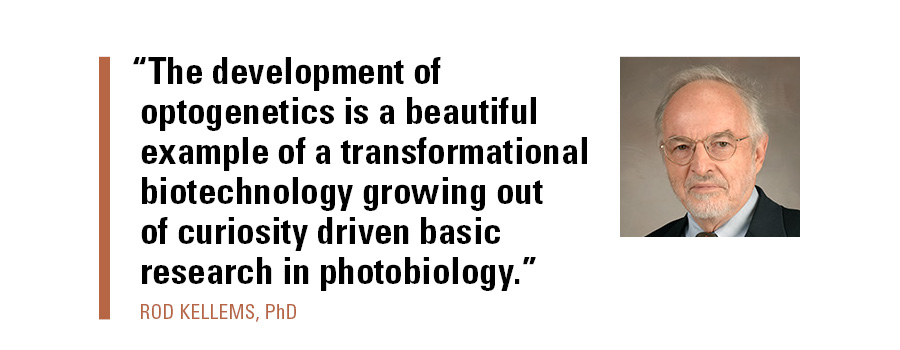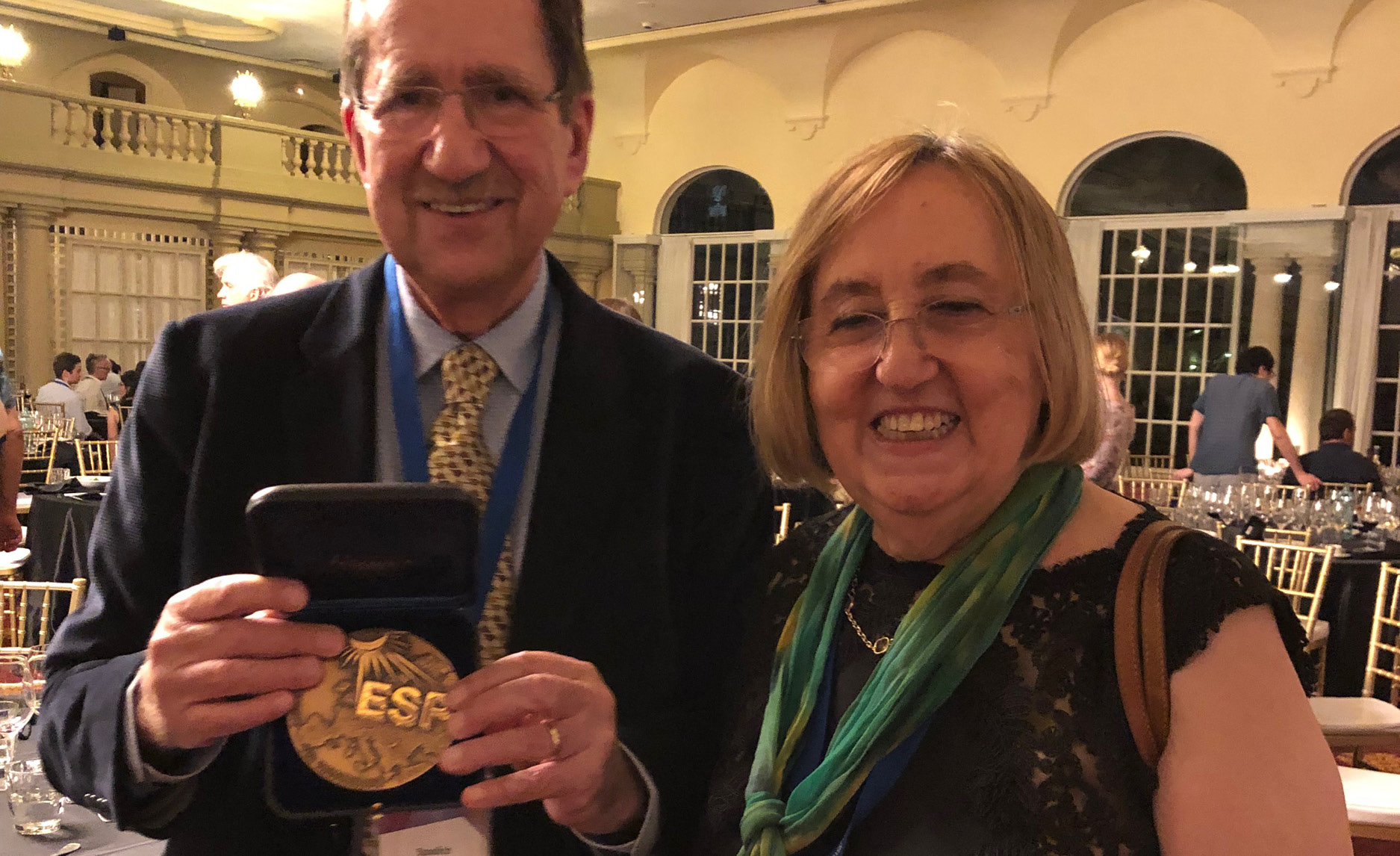A member of the McGovern Medical School faculty since 1991, John Spudich, PhD, professor of biochemistry and molecular biology, has focused his career on microbial rhodopsins, specifically on the light-gated channel activity of channelrhodopsins.
Serving as sensory photoreceptors to control movement in response to light, channelrhodopsins have been the driving force for the technology of optogenetics – controlling neurons, or other cells with light.
“The development of optogenetics is a beautiful example of a transformational biotechnology growing out of curiosity-driven basic research in photobiology, in this case research primarily on the chemical mechanisms of phototaxis by microorganisms,” said Rod Kellems, PhD, professor and Bob and Hazel Casey Chair in Biochemistry.
The National Institutes of Health has continuously funded Spudich’s research since 1980. In recent years, neuroscientists have used channelrhodopsins to control neural activity in genetically engineered pre-clinical models using light-activated control (optogenetics).
The Spudich lab’s discoveries, published in Science in 2015, of long-sought potent neuron-inhibiting natural light-gated chloride channels and in 2022 in Nature Neuroscience of light-gated potassium channels, provided new opportunities for light-controlled neural inhibition for research and clinical use. This work enables efficient photo suppression of neuron hyperactivity, which is centrally involved either as a cause or as a major symptom in myriad neurological disorders, such as epilepsy, Parkinson’s disease, autism, tinnitus, migraine, and chronic and post operative neuropathic pain, as well as cardiac rhythm dysfunction.

In addition to his long-running grant from the National Institute of General Medical Sciences, Spudich also is funded by the NIH BRAIN Initiative. In 2022, he received a NIH Instrumentation Grant to purchase a SynchroPatch instrument that allows high-throughput characterization of channelrhodopsins in up to 384 cells simultaneously. The instrument monitors ion currents in voltage-gated, ligand-gated, or light-gated channels, or ion exchangers or ion pumps, opening opportunities to enhance research and collaboration throughout McGovern Medical School.
Spudich, the Robert A. Welch Distinguished Chair in Chemistry and founding director of the Center for Membrane Biology, is active in the fields of microbial rhodopsins and optogenetics, publishing an extensive amount of research topics, including recent papers in Nature Neuroscience (2022) and the Proceedings of the National Academy of Sciences USA (2023) and most recently in Nature Communications (2023). Throughout his career, Spudich has been the lead author or contributed to the publication of over 225 articles in journals and countless more article reviews and has published two books. His work has received over 18,000 citations.
His numerous awards include the 2019 European Society for Photobiology Research Medalist Award and the 2003 American Society for Photobiology Research Award. Spudich was elected as a fellow of the American Academy of Microbiology in 1996 and of the American Academy of Arts and Sciences in 2007. He has served as president of both the American Society for Photobiology in 2001 and the International Union of Photobiology in 2014-2019. In 2000, Spudich received a Burroughs-Wellcome Fellowship for a sabbatical with Nobel laureate Richard Henderson at the MRC Laboratory of Molecular Biology in Cambridge, UK.
“Dr. Spudich’s lifelong interest in understanding the mechanisms of photochemical transformation of biological systems enables him to develop a deep understanding of the basic aspects of light-activated signaling that continue to advance the field of optogenetics,” Kellems said. “The channelrhodopsins discovered in his lab and their engineered descendants are now the tools of choice for optogenetics research throughout the world.
